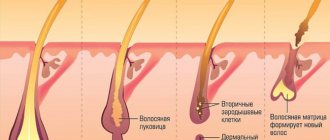The effect of dental anesthesia during hepatitis B
Dental treatment during lactation is carried out using local anesthetics. The dentist prescribes the drug in small doses (up to 2 ml). This amount will not harm the baby, and also has a number of advantages:
- does not affect the functioning of internal organs;
- passes into milk in minimal quantities;
- is eliminated from a woman’s body in 2-3 hours;
- local anesthesia;
- has no side effects.
Drugs with adrenaline are contraindicated for nursing mothers, so before treatment, be sure to tell your doctor that your baby is breastfed. In extreme cases, the child is switched to formula for a day.
Prevention
To avoid problems, regularly perform dental and oral health care. It's better to prevent than to treat! After all, the risk of diseases in nursing mothers is very high due to weakened immunity after childbirth. For prevention, use the following procedures:
- Brush your teeth after every meal;
- Use flossers and dental floss, special mouth rinses;
- Visit your dentist regularly;
- Change your toothbrush more often;
- Choose pastes with a high fluoride content;
- To strengthen bones and teeth, take vitamin complexes for nursing mothers. Read here what vitamins you can take during lactation;
- Eat foods containing calcium, especially sesame seeds, cottage cheese and cheese;
- Don't drink too hot drinks, don't eat a lot of sweets. In addition, such food is harmful to lactation and the infant!
Proper nutrition during lactation and daily dental and oral care will help avoid health problems!
Subscribe to our VKontakte group
Anesthesia drugs
Most modern drugs are approved during pregnancy and breastfeeding. If you are intolerant to the components of Lidocaine, you will be offered a different anesthetic. When whitening or filling teeth, you can use nitrous oxide, which is safe, but does not completely relieve pain. List of the best local anesthetics:
- Lidocaine. It is completely eliminated from the body after 4 hours, the highest concentration of the drug is in the first 2 hours. Analogues in the form of a topical gel: Dinexan,
- Luan, Xylocaine (aerosol, spray).
- Articaine. Does not pass into breast milk, but feeding is interrupted for 4 hours until toxic substances are completely eliminated. Approved for use during pregnancy.
- Novocaine. The most powerful anesthetic, when using it it is necessary to stop feeding for 24 hours.
When performing anesthesia, be sure to ask your dentist how long it takes for the drug to completely leave the body. Thanks to the administration of small doses and the use of low-concentration solutions, feeding can be restored within 2 hours.
Features of dental procedures during lactation
Pregnancy, childbirth and lactation are a lot of stress for the mother's body. If a woman lacks calcium, all of its concentration will be concentrated in milk, so beneficial microelements are washed out of bones and teeth over time. Treatment of diseases of the oral cavity during feeding is necessary, especially in the presence of infection, gumboil, and severe pain. Modern drugs are harmless to the baby.
X-ray of a tooth
X-rays are the main method of diagnosing the condition of a tooth, especially before its removal or filling. It is safe during lactation because a special apron is used to protect the mammary glands from radiation.
An alternative method of examination is visiography. Minimal radiation doses are applied only to the affected area.
After irradiation, express and drain the milk, after 2 hours you can feed the baby. A slight decrease in lactation is possible, but this is temporary. After a day, milk production will be restored.
Sealing
If the tooth is partially destroyed, it is allowed to place a metal, polyacrylic or cement filling. Any of the listed materials does not penetrate milk. During the procedure, local anesthesia is given if the nerve must first be removed.
When the oral cavity is affected by caries or pulpitis, the affected teeth are cleared of infection. Next, the entire cavity is treated with an antiseptic (Chlorhexidine, Rotokan, Furacilin). A filling restores the integrity of the incisor.
Antibiotics are prescribed to prevent the development of the disease. The drugs used are those that cause minimal harm to the baby’s body: drugs of the penicillin group, Erythromycin. In some cases, breastfeeding is interrupted for 5-7 days.
Installation of implants and prosthetics
For implantation, the following drugs are most often used: Tsifran, Lincomycin, Amoxicillin, Amoxiclav, Metronidazole. They are found in breast milk and can harm the baby. Also, artificially installed teeth have difficulty taking root due to hormonal imbalance and impaired metabolism. Conclusion: implantation is carried out after breastfeeding ends.
Removal of teeth and roots
If there are indications, it is necessary to remove the diseased tooth and root (even during breastfeeding). After surgery, antibiotics may be used for 5-7 days. They prevent the development of infection:
- Ampicillin;
- Amoxicillin;
- Amoxiclav;
- Cefepime;
- Erythromycin.
The listed drugs may pass into breast milk. They should be used with caution, under the supervision of a physician. If necessary, breastfeeding should be stopped.
Tooth extraction is performed under local anesthesia or general anesthesia (Diazepam, Profopol), depending on the complexity of the operation. When purulent flux forms, it is cut and all contents are removed.
Wisdom tooth removal
During the eruption of wisdom teeth, a woman’s temperature may rise and milk production may decrease. To eliminate pain, urgent removal is recommended. Painkillers and antispasmodics are taken only if pain occurs. To reduce the risk of side effects in the baby (dysbacteriosis, colic), antibiotics are taken immediately after daily feeding, after two hours the milk is expressed and poured out.
Whitening
Chemical bleaching in the clinic or at home is not used during breastfeeding, as there is a risk of toxic substances passing into breast milk. Also, aggressive effects on teeth can lead to caries, thinning of enamel, and the appearance of gray spots. Therefore, laser and mechanical techniques are also contraindicated, although they do not harm the baby’s health.
For whitening, you can use special gels and pastes. To improve the appearance of your teeth, you can remove plaque or stones, which will make your smile 1-2 shades lighter.
Permitted and not recommended procedures
Today, dental offices offer numerous procedures to their patients. Is everything possible for women who are in the process of lactation?
Tartar cleaning
Tartar occurs as a result of improper brushing of teeth. Formed from food debris mixed with mucus and bacteria. It is bonded with calcium phosphate. Initially, the stone is soft, but over time it cannot be removed on its own.
The main symptoms are bad breath and bleeding gums. The disease leads to periodontitis, and more advanced cases lead to loosening and subsequently tooth loss.
Stone removal occurs using absolutely harmless ultrasonic vibrations. A special device turns it into dust. After the procedure, the enamel is covered with a paste that protects against re-formation of plaque. The procedure is harmless and ideal for breastfeeding.
Dental prosthetics
One of the most complex and time-consuming procedures in dentistry. Experts cover extracted or damaged teeth with artificial crowns. When installing bridges, grinding of nearby healthy units is carried out.
It is also possible to place an implant into the jawbone. But this procedure is not recommended when breastfeeding. Because a completely new dental area has not been fully studied.
Anesthetic drugs used during manipulation pass into breast milk, which is undesirable for the baby. Usually, after the procedure, a course of antibiotics is prescribed, which are incompatible with breastfeeding.
Crown restoration
A severely damaged tooth is restored with a crown. This is a kind of substitute that covers the entire tooth or most of it. It can be made of any material.
For a young mother, this procedure is absolutely safe. The medications used during the procedure do not affect breast milk.
Fluoride varnish coating
Fluoride is a reliable dental protector. It prevents tooth decay, prevents the proliferation of microbes and minimizes the risk of stone formation. Fluoride varnish – strengthens tooth enamel and helps retain calcium and minerals.
This coating is ideal for all patients in the dental office, including young mothers.
Cyst treatment
A cyst is a benign tumor, the aggravating consequences of which are inflammation and suppuration. If its treatment is ignored, the consequences can be dire, from the formation of a fistula through which pus will leak to blood poisoning. Therefore, at the first sign of a lump, you should immediately visit a doctor.
Modern medications intended for the treatment and removal of cysts are completely safe during breastfeeding.
Permitted painkillers for toothache: list of anesthetics
Toothache occurs suddenly and makes chewing and swallowing difficult. If the discomfort is not relieved, the syndrome radiates to the ear, cheek, and head. There is a small list of drugs allowed during lactation. Before taking them, you should consult your dentist.
The best pain relievers for breastfeeding mothers:
- Paracetamol. It is a good replacement for Analgin and is also allowed during pregnancy. Taken three times a day, but not more than 1500 mg per day.
- Ibuprofen or Nurofen. Not only eliminates pain, but also reduces temperature. Take no more than 400 mg in 6 hours, the permissible dose per day is 1200 mg. [1]
- No-shpa. An antispasmodic that reduces headaches, toothaches, and intestinal discomfort. You should not take more than 6 tablets (40 mg) per day.
- Dentol Baby, Kalgel. Local preparations that are used to reduce pain during teething. Apply a thin layer to the inflamed gums up to 6 times a day.
- Chlorhexidine (0.05%), Furacilin (aqueous solution of crushed tablets and water). Used for rinsing, killing pathogenic microorganisms, preventing the development of caries. It is recommended to use twice a day after brushing your teeth.
Traditional medicine suggests taking advantage of the properties of oak bark, chamomile, and sage. Rinse the mouth with a herbal decoction 2 times a day. You can also use a soda solution with a drop of iodine and salt added. Alternative medicine is powerless when the root is damaged or a purulent process develops.
Prevention of oral diseases
To prevent diseases, it is necessary to maintain dental health even while planning pregnancy. Get checked by a dentist every six months, and if necessary, every trimester. To prevent the development of an infectious process, it is recommended:
- brush your teeth daily, use dental floss, mouthwash;
- use toothpaste and gel to strengthen gums and tooth enamel;
- regularly clean your teeth from plaque and stones;
- eat nutritiously, limit the consumption of fast carbohydrates, consume dairy products and meat daily;
- take a course of vitamin complex with calcium.
If pain occurs, do not tolerate it, but immediately consult a specialist. Most dental procedures are performed without harm to the baby. With the development of a purulent process and infection of bone tissue, it is necessary to refuse feeding.
Dental treatment during breastfeeding is practically no different from conventional therapy. The drugs used during the procedures are safe for mother and child. They are eliminated from the body a few hours after use. To eliminate toothache, Paracetamol or No-spa is most often used. If you want a snow-white smile, get an implant or dentures, you will have to wait until the end of lactation.
Category Pregnant Published by kosmetik-dent
The process of tooth extraction in a nursing mother
The procedure for a woman during lactation is no different from that performed for ordinary patients.
Extirpation of a dental unit is carried out in stages:
- antiseptic treatment of mucous membranes;
- anesthesia with local antiseptics or general anesthesia;
- applying forceps and disconnecting the ligament;
- rocking or dislocation;
- extraction from the hole;
- stop bleeding.
If the third painter from below is removed, the operation becomes more complicated. In order to pull it out, the doctor cuts the gum, removes part of the bone, divides the roots into fragments and removes them separately. To prevent infection, the wound is treated with antibacterial drugs. After all manipulations, the gums are sutured with absorbable or non-absorbable suture material.











